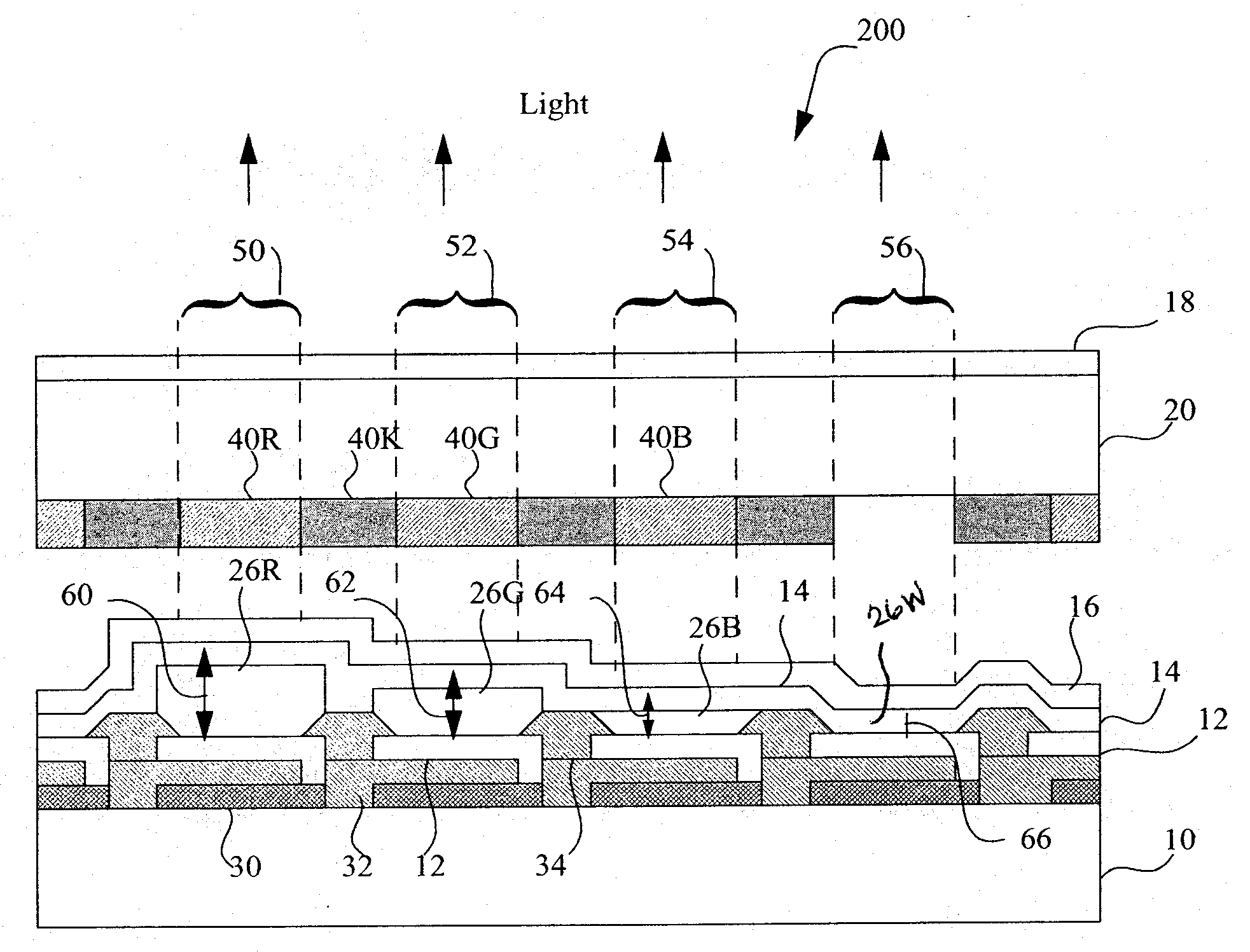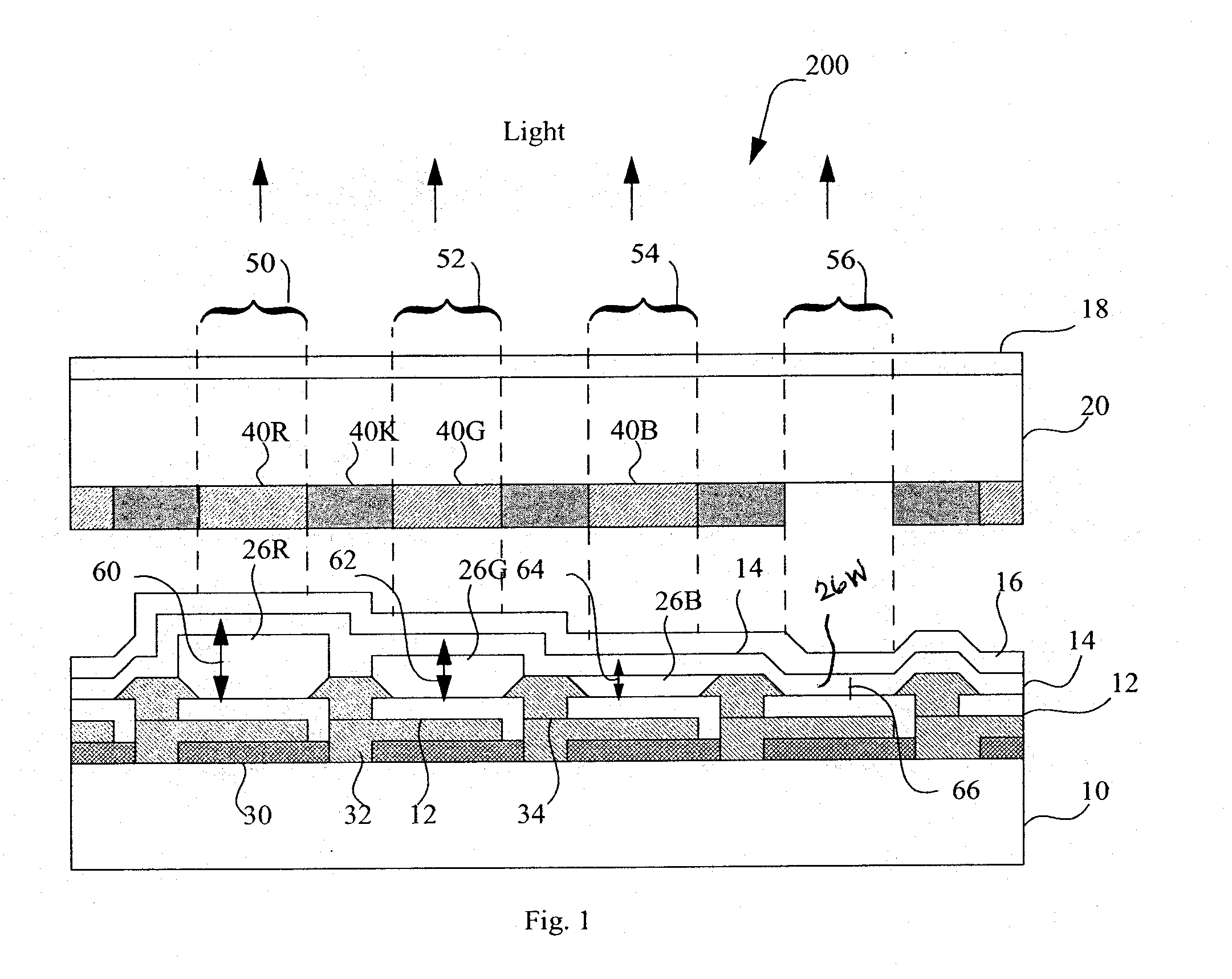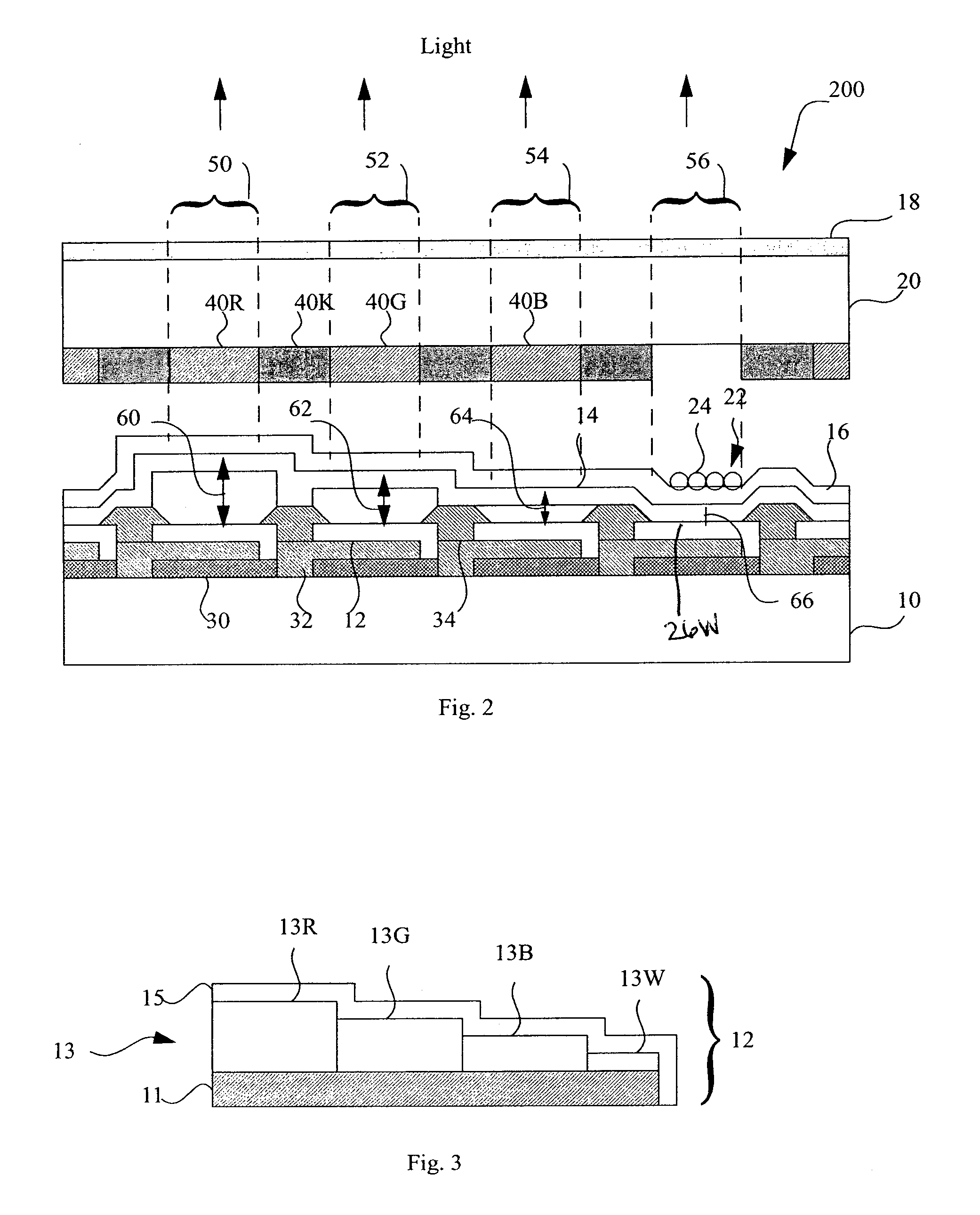LED device having improved contrast
a technology of led devices and contrast, which is applied in the manufacture of electrode systems, electric discharge tubes/lamps, discharge tubes luminescnet screens, etc., can solve the problems of poor ambient contrast ratio, insufficient contrast of polarizers, and difficulty in achieving ambient contrast. , to achieve the effect of increasing the light output and ambient contrast of an led devi
- Summary
- Abstract
- Description
- Claims
- Application Information
AI Technical Summary
Benefits of technology
Problems solved by technology
Method used
Image
Examples
Embodiment Construction
[0024]Referring to FIG. 1, a light-emitting diode device according to an embodiment of the present invention comprises a substrate 10, a reflective electrode 12, and a semi-transparent electrode 16 formed over the substrate 10. Either the reflective electrodes 12 or semi-transparent electrodes 16 is patterned to form a plurality of independently controllable light-emitting elements 50, 52, 54, and 56. The independently controllable light-emitting elements are controlled, for example by thin-film electronic components 30 formed on the substrate 10. The other electrode may be unpatterned and electrically common to all of the light-emitting elements. An unpatterned white light-emitting layer 14 is formed between the reflective electrode 12 and the semi-transparent electrode 16. Reflective electrode 12, semi-transparent electrode 16, and unpatterned white-light-emitting layer 14 form optical microcavities 60, 62, 64, and 66. A plurality of color filters 40R, 40G, and 40B are formed over...
PUM
 Login to View More
Login to View More Abstract
Description
Claims
Application Information
 Login to View More
Login to View More - R&D
- Intellectual Property
- Life Sciences
- Materials
- Tech Scout
- Unparalleled Data Quality
- Higher Quality Content
- 60% Fewer Hallucinations
Browse by: Latest US Patents, China's latest patents, Technical Efficacy Thesaurus, Application Domain, Technology Topic, Popular Technical Reports.
© 2025 PatSnap. All rights reserved.Legal|Privacy policy|Modern Slavery Act Transparency Statement|Sitemap|About US| Contact US: help@patsnap.com



